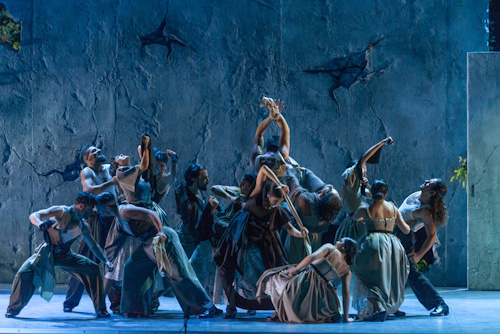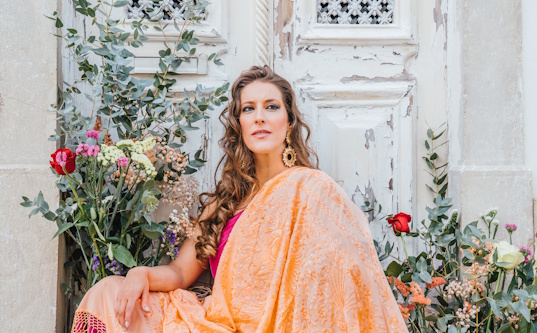Ballet Flamenco de Andalucía in Pineda: Romance popular en tres estampas *
Sadler’s Wells, London
June 6, 2025
Flamenco by Cantaora by Argentina, and Queralt Lahoz en acústico
Lilian Baylis Studio, Sadler’s Wells, London
June 5, 2025
It was the play that launched Federico Garcia Lorca’s stage career. With Spain struggling under Primo de Rivera’s tyrannical rule and in the face of persecution, a young and rebellious woman, Mariana de Pineda, defies the oppressive dictatorship in the name of love. Vividly captured, Lorca’s play explores fate, freedom and womanhood as it tells her story.
Although there are many dance productions of Lorca plays, he is not always the easiest to translate. But given Pineda’s deep Andalucian roots, what better dance form could there be than flamenco. And in Pineda: Romance popular en tres estampas, director of the Ballet Flamenco de Andalucía, Patricia Guerrero, who performed the lead role herself, does an impressive job in giving body and soul to the character in what is a compelling flamenco ballet.
There’s a lot of story thumped out in the work’s ninety minutes as her story is told in rhythm, contrasting the mundane social behavioural norm against the desire for individuality and escape from routine; and authority versus freedom with love and loss along the way.
Each group within the work is depicted clearly. The clipped and precise steps of the representation of the regime are danced aggressively while the central characters dance more expansively. The ‘crowd’ move in tight, strong, angry synchronised groups beating the rhythm of life.
The women, dressed like maids, carried their arms like cradles and only appeared within the home and jail. It was very much a commentary on how they were supposed to behave at the time, emphasising how different Pineda was as she fought for love and liberty.
Pineda’s own costume changes from a vivid green dress (the colour of Andalucian flag, and of nature and hope, to purple gown (the colour of religion and royalty) as the plot thickens and she’s imprisoned. In the passionate pas de deux with her lover Captain Pedro de Sotomayor (played by Eduardo Leal) at the end, she’s in a beautiful red silk, flowing tailed dress. There’s great duende action of black veiled spirits.
The whole piece is helped along by Francisco Cabanillas and Rafael Gómez García’s clever lighting, and Bengoa Vázquez and Laura Ordás’ simple but very effective set. Both magnified the atmosphere and emotions of the piece.
The previous evening (June 5), the Lilian Baylis Studio hosted a double bill of female singers accompanied by their respective guitarists which, if nothing else, provides how wide a range has been embraced by flamenco in recent years.
Flamenco by Cantaora showcased the amazing Argentina (aka Maria Lopez Tristancho), truly one of the great voices on the contemporary flamenco scene. From the very outset, she held the stage with admirable accompaniment from her guitarist Jesús Guerrero.
Imbued with lots of passion and suthenticity, she sang a traditional set of palos for more than an hour. At the merest hint of ‘tiriti tran tran tran’ as she launched into allegrías, the audience roared, and with every justification. But that was as nothing compared to her signature finale, Fandangos de Huelva. Such was the adulation that she treated us to a little bulerías at the very end. Were she a classical singer, her range would probably be a light mezzo, but there is nothing light about her singing. She manages to reach depths of feeling whilst not having a heavy or even that large a voice.
Queralt Lahoz could not have provided more of a contrast. Accompanied by Daniel Felices, her hour was more of a pop concert with a flavour of flamenco. Whilst her microtonality could not be faulted, her voice is somewhat girlish and her choice of palos was extremely wordy. There was also a fair bit of chat which placed non-Spanish speakers at a disadvantage. I was also put off by her distracting mannerisms, including raising one arm then the other, and constant fiddled with her hair and her clothing.
Lahoz clearly has a following and many people in the audience sang along with her, with her encouragement. At one point she made (almost) everybody stand up and clap along. Her calling a friend to the stage and singing to him as he swayed along simply felt embarrassing. And how disappointing to hear a wolf whistle from a member of the audience as she entered. There is still a way to go to eliminate sexism, it seems.
* Pineda words by Sarah Bell.




